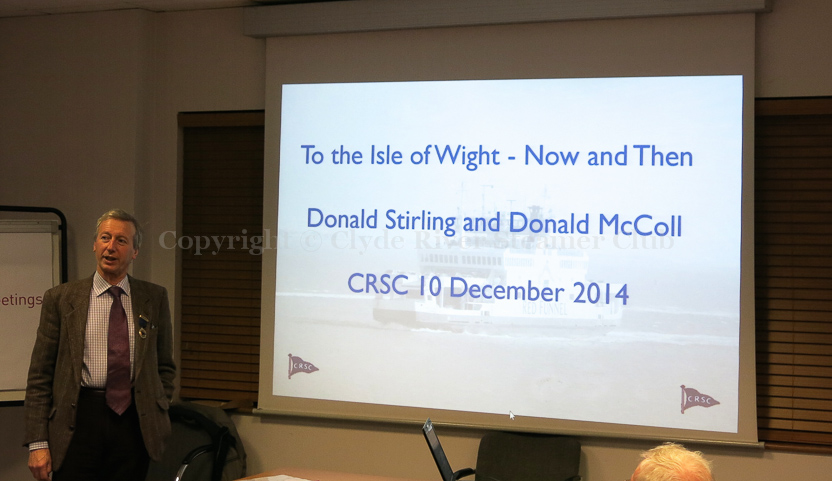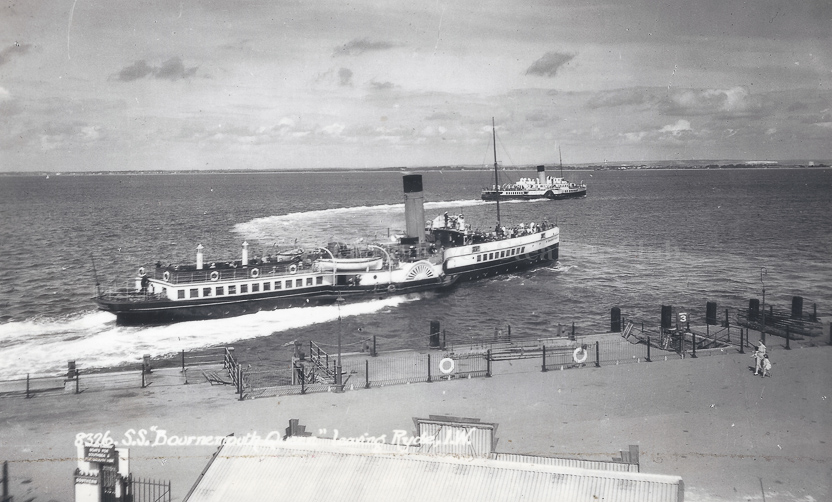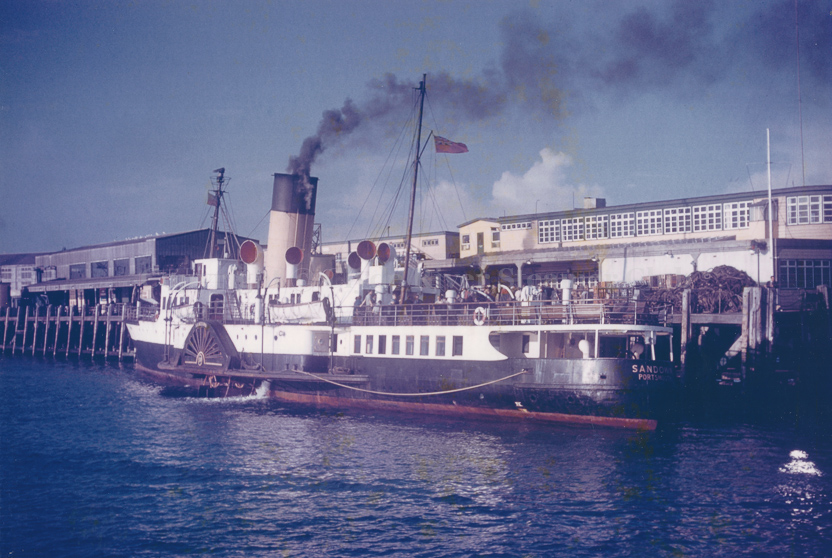Despite appalling weather, which forced the cancellation of numerous ferry services, more than 50 hardy souls made their way to Jurys Inn, Glasgow, for the CRSC’s monthly meeting on 10 December 2014. They were rewarded with a presentation by ‘the two Donalds’ — veteran Club member Donald McColl and relative newcomer Donald Stirling, both talking about their experiences of the Isle of Wight. Titled ‘To the Isle of Wight — Now and Then’, their presentation resembled a two-pronged Members’ Night, with both speakers treating their subject from a highly personal angle.
 |
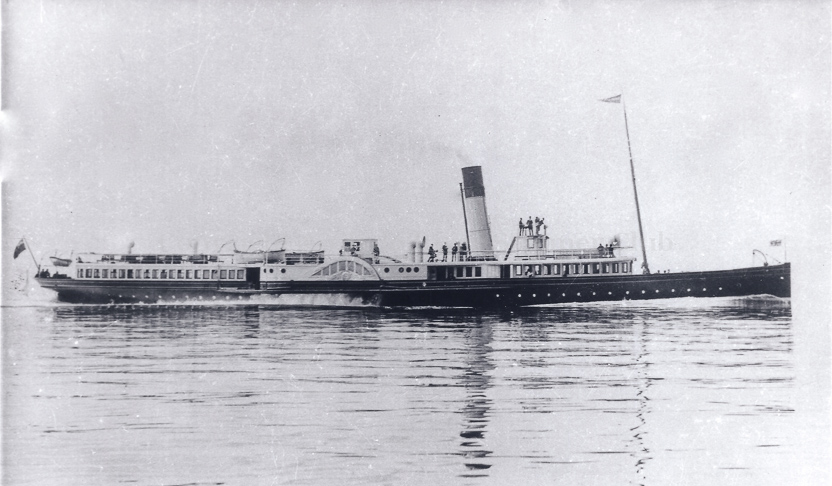 |
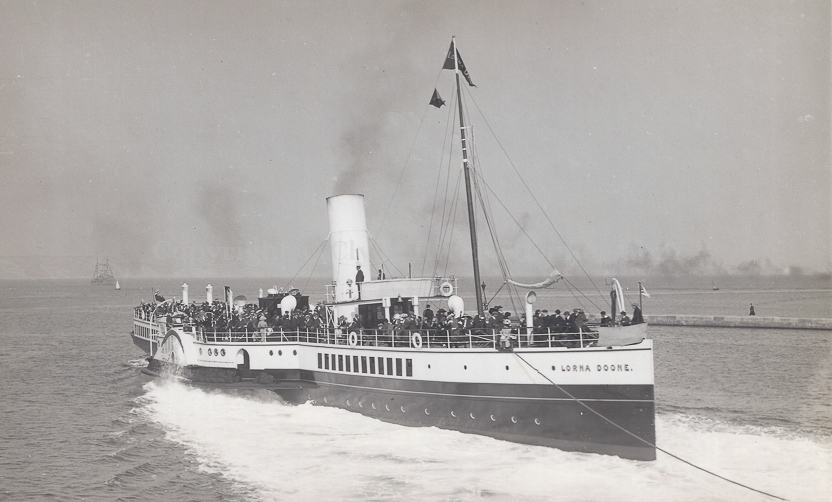 |
| Donald McColl in full flow | Lorne Doone on trials on the Clyde in 1891 | Lorna Doone as altered in 1907 |
Donald McColl’s interest in south coast steamers stems from his experience of being based in the Portsmouth region at the end of the Second World War — but what his talk revealed was the number of links between Clyde and Solent. His first illustration was of the 1891 paddler Lorna Doone, the design of which became a template for the Glasgow and South Western Railway Company’s 1892 sisters Neptune and Mercury: all three were built by Napier, Shanks and Bell at Yoker.
Likewise, the first steamer Donald sailed on to the Isle of Wight, on VE Day 1945, was a product of Barclay, Curle’s Whiteinch yard — Solent Queen of 1889. Back in Scotland, he had to blink twice when he saw the Red Funnel Company’s 1908 paddler Bournemouth Queen at Greenock on her way south from Fort William, where she had been stationed at the end of the war. Another Clyde link with the Solent was Robina, the peripatetic passenger ship that ended the war tendering on the Clyde and, after a MacBrayne interlude, was sold to the south coast of England.
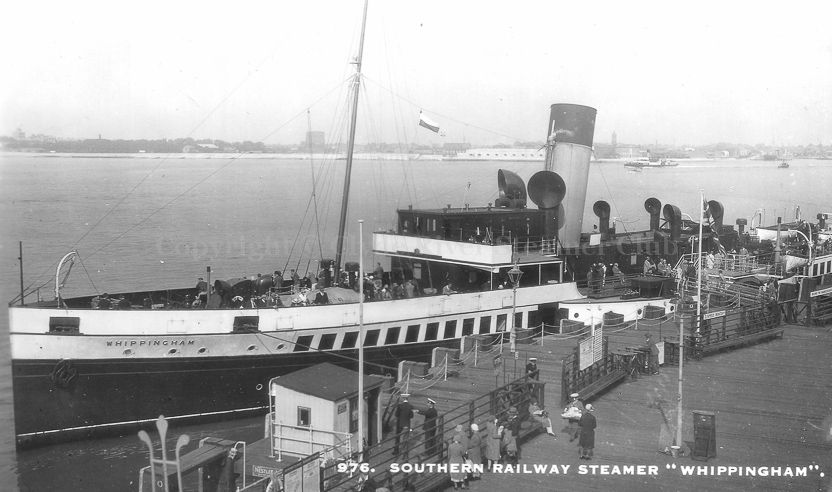 |
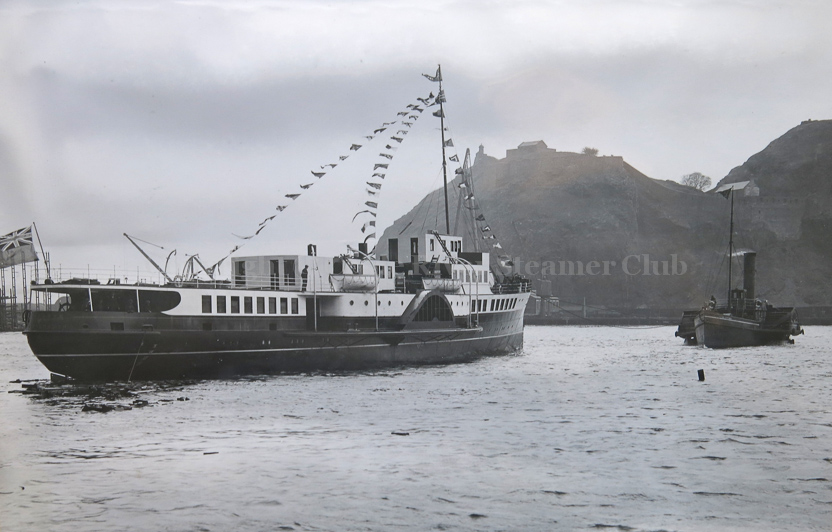 |
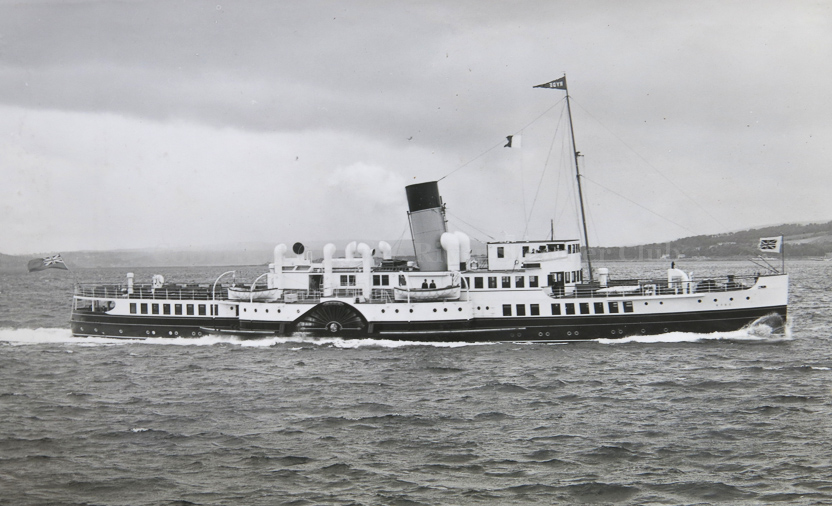 |
| Southern Railways’ Whippingham | Launch of Sandown at Dumbarton in 1934 | Ryde on the Skelmorlie mile in 1937 |
There was an unmistakable enthusiasm in Donald’s voice when he spoke about the Southern Railway’s 1930 Portsmouth-Ryde paddler Whippingham, a Fairfield product from Govan, but it was the number of Isle of Wight ships built by Denny of Dumbarton that grabbed the attention.
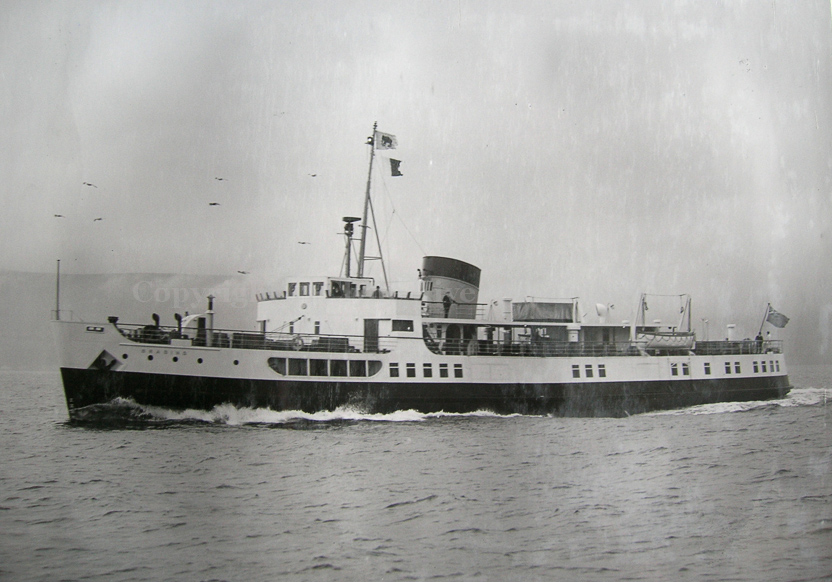 |
 |
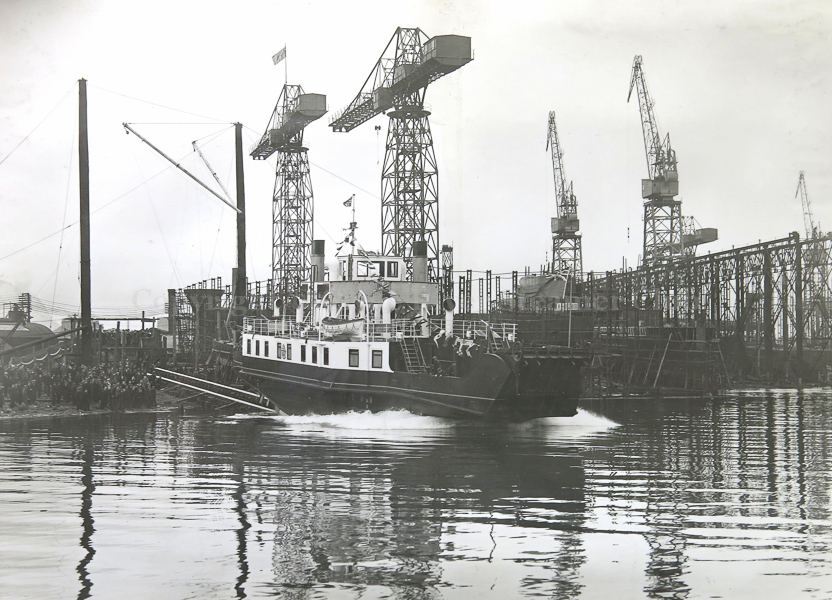 |
 |
|
Brading on trials off Skelmorlie in 1948
|
Brading in the late 1960s
|
Launch of Lymington at
Dumbarton in 1938
|
Diesel-electric paddle ferry Farringford
in her original condition
|
These included the paddlers Sandown of 1934 and Ryde of 1937, the postwar diesel trio of Brading, Southsea and Shanklin, and a pair of car ferries — Lymington of 1938, the first British vessel powered by Voith Schneider propellers, and Farringford of 1948, a diesel-electric paddler. Both these ferries were subsequently purchased by Western Ferries for Clyde service, though Farringford never made it back here.
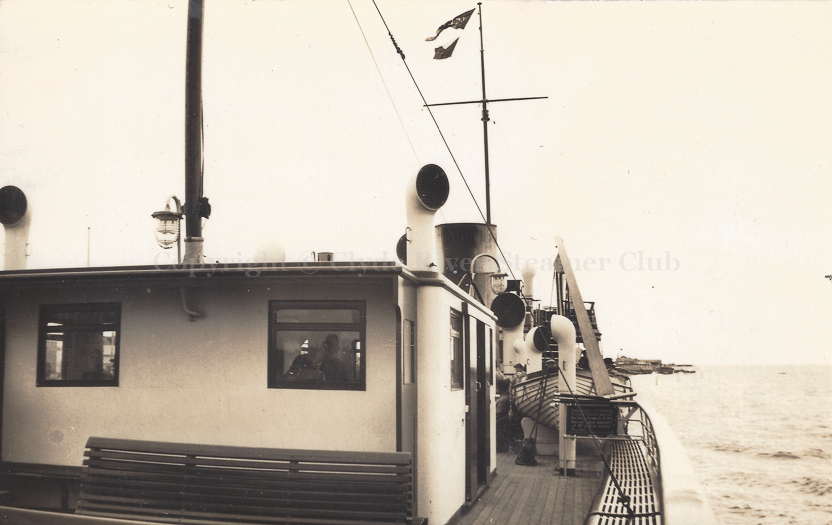 |
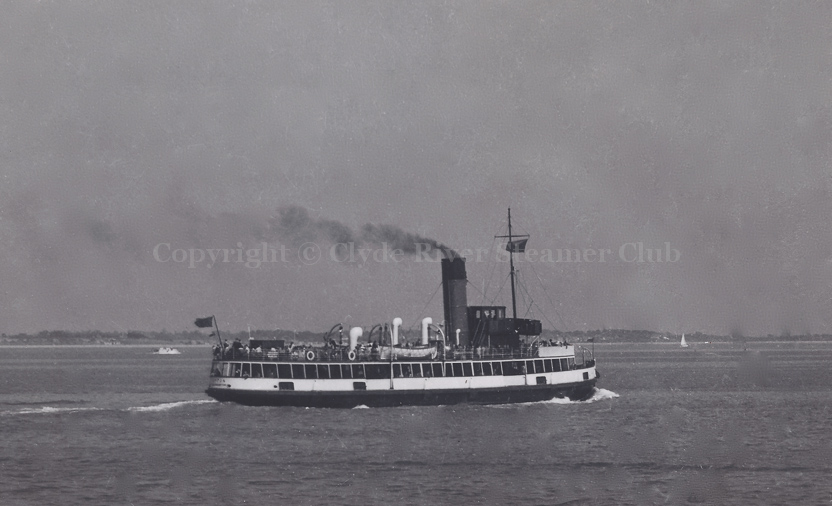 |
 in the Solent circa 1950.jpg) |
| On board Vecta | Upton on the Solent |
Former Admiralty minesweeper Lorna Doone (1916)
on the Solent circa 1950
|
Not all Solent steamers had a Clyde link: we were treated to pictures of the car-carrying passenger vessels Medina and Vecta, the former Birkenhead ferry Upton, the ex-Anchor Line tender Paladin and a pair of twin-funnelled ex-Admiralty paddlers that passed into Red Funnel hands in the late 1940s — Solent Queen and Lorna Doone.
If Donald McColl focused on ‘Then’, Donald Stirling’s sphere of interest was unmistakably ‘Now’. His recent three-day excursion to the Isle of Wight had been undertaken with the express intent of travelling on as many ferry routes as possible — Lymington to Yarmouth, Ryde to Portsmouth, Portsmouth to Fishbourne, Cowes to Southampton and back, with the East-West Cowes chain ferry, the Gosport ferry, the Isle of Wight’s ex-London Underground trains and various bus services thrown in for good measure. We also saw hydrofoils, hovercraft — and the former Clyde sludge boat Shieldhall.
Of particular interest were the Hythe ferry Hotspur 4 (quasi-sister to the Clyde’s Kenilworth) and Red Osprey and Red Eagle, Red Funnel car ferries built by Fergusons of Port Glasgow in the 1990s. Just as impressive were the Croatian-built Wightlink trio, Wight Sky, Wight Sun and Wight Light, all dating from 2008; plus Wightlink’s flagship St Clare, built at Gdansk in 2001.
The most spectacular photo of the evening was Donald’s sun-blest shot of four boats in perfect alignment — a yacht, a Red Jet catamaran, a Red Funnel ferry and a speedboat.
A yacht, a Red Jet, Red Osprey and a speedboat
all seem to be in close proximity
In his vote of thanks Eric Schofield noted that, while Donald McColl’s ‘period piece’ had illustrated the similarities in style between Clyde and Solent, Donald Stirling’s photos had underlined how strikingly different the Solent’s ferries had now become. It had been an “unusual but interesting” evening, because the Isle of Wight, while in some respects far away from the Clyde, had been made to feel near.












